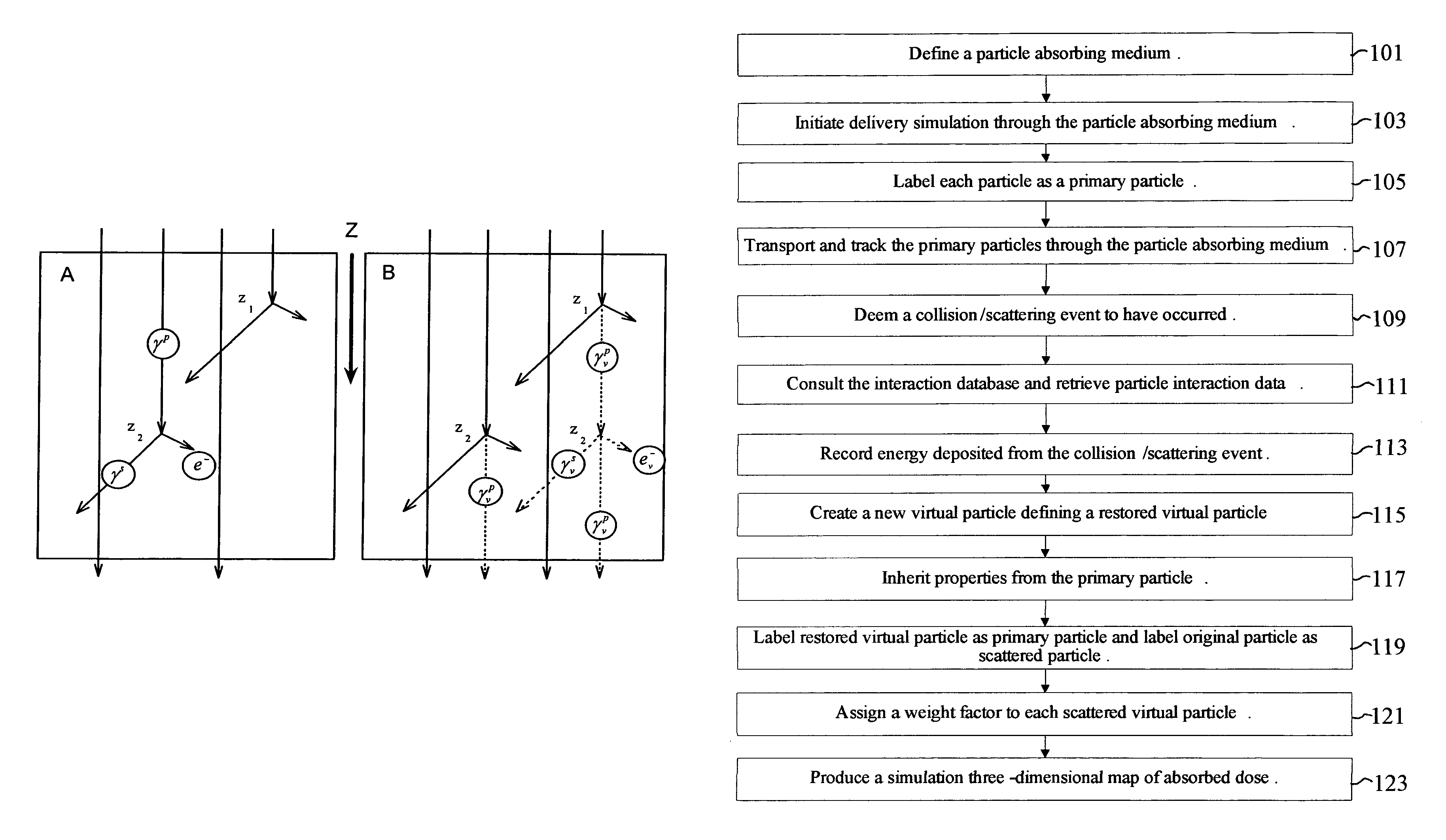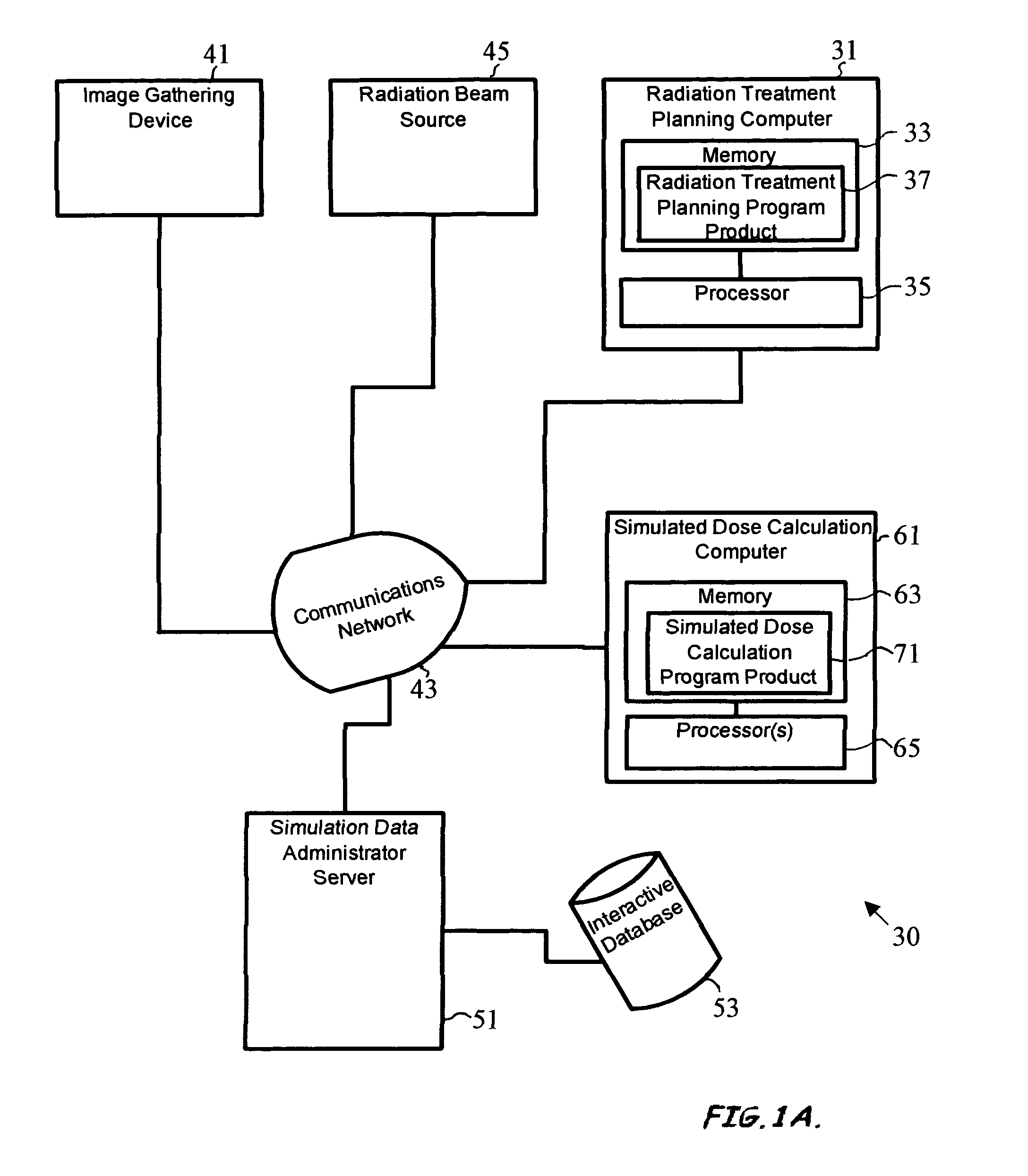Variance reduction simulation system, program product, and related methods
a simulation system and variable reduction technology, applied in the field of radiation transport simulation, can solve the problems of damage to healthy surrounding tissue and organs, radiation dose may not be delivered to the correct location within the patient's body, and under-treatment of the target tumor, so as to improve simulation efficiency, reduce computing time, and constant accuracy
- Summary
- Abstract
- Description
- Claims
- Application Information
AI Technical Summary
Benefits of technology
Problems solved by technology
Method used
Image
Examples
Embodiment Construction
[0053]The present invention will now be described more fully hereinafter with reference to the accompanying drawings, which illustrate embodiments of the invention. The present invention may, however, be embodied in many different forms and should not be construed as limited to the illustrated embodiments set forth herein. Rather, these embodiments are provided so that this disclosure will be thorough and complete, and will fully convey the scope of the invention to those skilled in the art. Like numbers refer to like elements throughout. Prime notation, if used, indicates similar elements in alternative embodiments.
[0054]Many different fields or areas are confronted with the same challenge of computation efficiency. These fields can include, for example: simulations of space radiation upon the earth's atmosphere; radiation safety for astronauts; medical X-ray imaging using KeV photons; and intensity modulated radiation therapy using, e.g., MeV photons, just to name a few. The descr...
PUM
 Login to View More
Login to View More Abstract
Description
Claims
Application Information
 Login to View More
Login to View More - R&D
- Intellectual Property
- Life Sciences
- Materials
- Tech Scout
- Unparalleled Data Quality
- Higher Quality Content
- 60% Fewer Hallucinations
Browse by: Latest US Patents, China's latest patents, Technical Efficacy Thesaurus, Application Domain, Technology Topic, Popular Technical Reports.
© 2025 PatSnap. All rights reserved.Legal|Privacy policy|Modern Slavery Act Transparency Statement|Sitemap|About US| Contact US: help@patsnap.com



